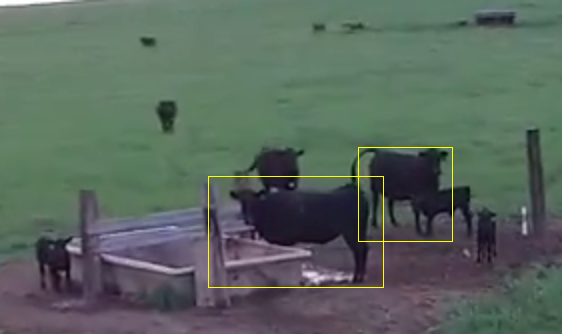Detect cattle in drone video footage
I’m looking at using OpenCV to detect cattle within footage taken from a drone.
Every time I get to the point of making a decision on what technique I should use I either read something contradictory that indicates that it might be a bad choice or I read about some other technique which seems more suitable.
My current feeling is that I should use a LBP Cascade Classifier, but every time I learn something new about it I realise that there’s dozens of other things I don’t know about it or don’t understand fully. And, case in point, just seconds ago I read that HAAR and LBP might not be as suitable for non-rigid objects as some other techniques.
So, while I realise that there will be no ‘right’ answer or silver bullet, I’m looking for some guidance to narrow down the set of techniques I that I should be looking into more deeply.
My initial requirement is to be able to process footage taken from a drone that has crisscrossed a paddock (field) and identify the specific parts of the footage that contain cattle. This information can then be used to create index points (chapters) in the video so that skipping to the next ‘interesting’ piece of footage is simple. Ideally I'd also be able to display an identifying box around the detected cattle.
Initially we can assume that there will not be any other animals, such as horses or sheep, present in the footage or if there are other animals we don’t mind them being detected as well. In an ideal world it’d be nice to be able to tell the difference between a horse and a cow, but for now that’s not a requirement.
The footage of the paddocks will generally be free of other cattle shaped objects, but it will contain trees, logs and rocky outcrops. There will also possibly be sheds, houses, fences and vehicles contained within the footage as well as varying shadows and different shades of grass you would expect to find in such footage.
Most questions/answers that I see about detecting animals (or non-uniform objects) in video footage are about fixed surveillance type camera footage where the background doesn’t change except for gradual lighting changes and most could be solved with simple motion detection. Obviously footage taken from a continually moving camera on a drone will have different problems to content with. The background will be constantly changing and also, because of the camera movement, cattle will not always be placed in one particular area of the frame, nor will they ever track along the same/similar path. Another issue is that I need to identify “cattle”, not “a cow that has has been nicely framed for a picture". Cattle move about in groups and the footage will rarely contain a full clean image of any individual animal, rather there will be animals obscuring each other and animals could be at ...



you could try the LatentSVMDetector in opencv2.4 (or its dpm successor in 3.0) , which has a pretrained cow detector, but again, it was trained on front/side view from the ground, not for top view from a drone.
oh, and as always, - an example image would be quite helpful !
I still did not find a train for that detector, I shall go to Matlab and train it there, and it is a little complex to read it like that ad make my data in the wanted format... :(
^^ heroic attempt !
@berak thanks for the tip on the LatentSVMDetector and DPM. The LatentSVMDetector seems like it might be pre-trained (or comes with one trained model). Information on the DPM is pretty thin on the ground. Looks like the LatentSVMDetector can only be trained/retrained with Matlab on Linux, which is disappointing. No idea about the DPM but I'm guessing the training options will be the same or worse.
@berak I've edited question to include link to video footage which is much more relevant than any individual example image could be.
@Scott, nice, but i won't download a 75mb video ;(
"I'm guessing the training options will be the same or worse." - i'm afraid, you're spot-on here ;(
pssst @berak, combine your remarks into an answer? ;)